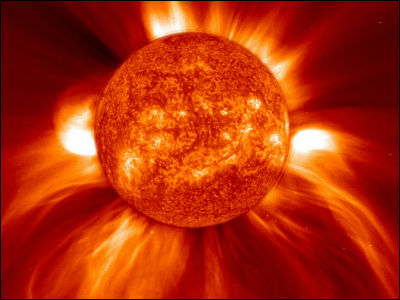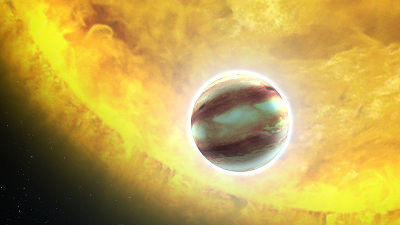The European Space Agency plans to launch a twin satellite ``Proba-3'' in 2024 that will artificially cause a solar eclipse and observe the sun.

The European Space Agency (ESA) plans to launch a twin satellite, Proba-3 , in the second half of 2024. Proba-3 is capable of maintaining an artificial solar eclipse state for a long period of time, and can continue to make minute observations of the solar corona for a long period of time.
ESA - About Proba-3
ESA - Face to face with Sun-eclipsing Proba-3
https://www.esa.int/Enabling_Support/Space_Engineering_Technology/Proba_Missions/Face_to_face_with_Sun-eclipsing_Proba-3
The Sun is so bright that it is difficult to observe phenomena such as coronal mass ejection during normal times. During a solar eclipse, when the sun is hidden by the moon, a variety of phenomena can be observed, but a total solar eclipse, when the sun is completely hidden, lasts only a few minutes, making it impossible to observe the sun's minute phenomena for a long period of time. .
The ``Proba-3'' that ESA is planning to launch is a twin satellite consisting of a ``Coronagraph satellite'' carrying equipment to observe the solar corona, and an ``Occulter satellite'' that will enter between the Coronagraph satellite and the sun and block light. It is an artificial satellite. The Occulter satellite flies at a distance of 144m from the Coronagraph satellite and can maintain a total solar eclipse for up to six hours during each orbit. It is hoped that this will allow us to observe minute solar phenomena that can only be observed during a total solar eclipse.

The Coronagraph satellite is equipped with an observation device called the Association of Spacecraft for Polarimetric and Imaging Investigation of the Corona of the Sun (ASPIICS), which enables detailed observation of phenomena and structures occurring near the surface of the sun. . It is hoped that ASPIICS observations will provide clues to solving questions such as ``Why is the temperature of the solar corona higher than the sun's body?'' and ``What impact does coronal mass ejection have on the Earth?'' Masu.

Proba-3 is scheduled to launch in the second half of 2024. Furthermore, during the total solar eclipse that will occur on the North American continent on April 9, 2024, observation equipment with similar functionality to ASPIICS will be tested.
Related Posts:
in Science, Posted by log1o_hf







